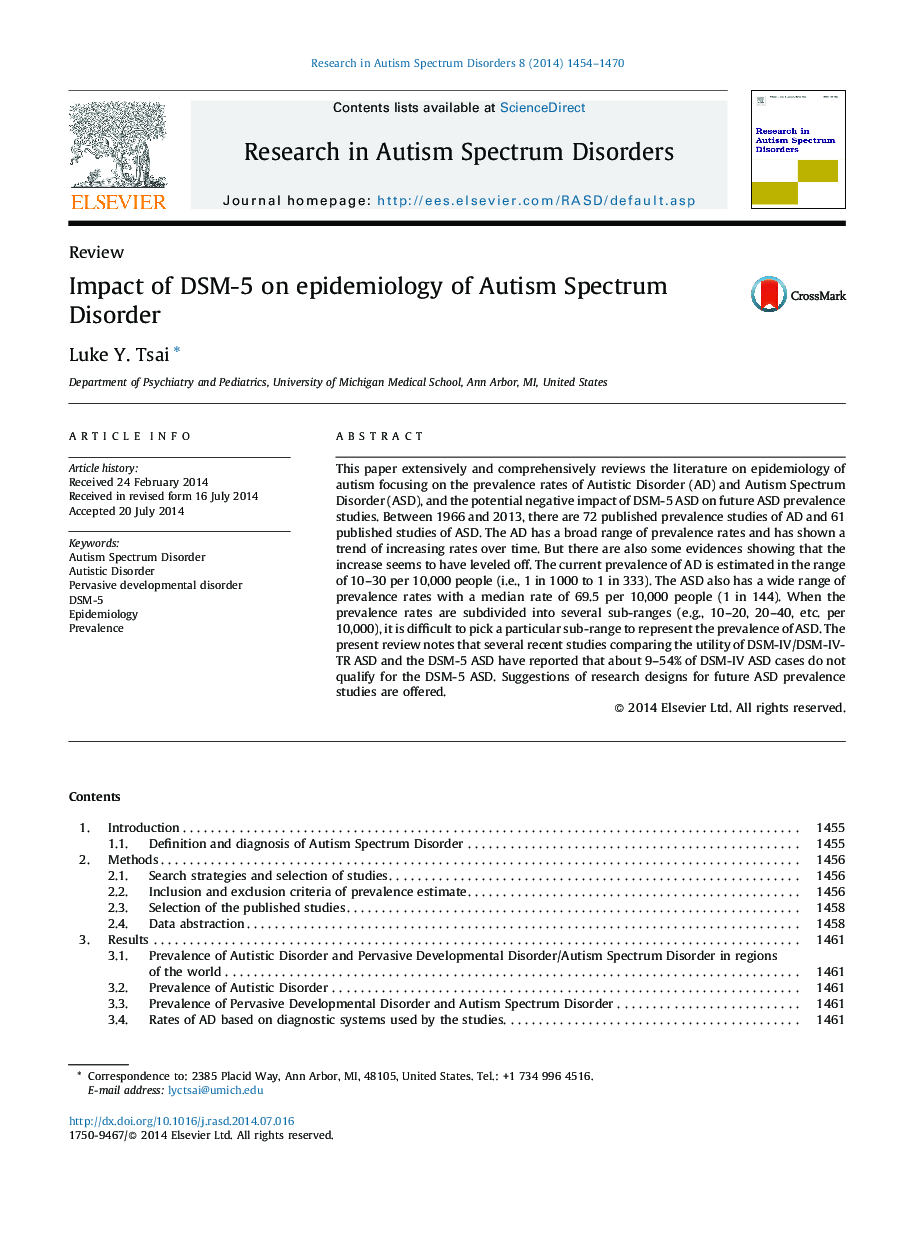| کد مقاله | کد نشریه | سال انتشار | مقاله انگلیسی | نسخه تمام متن |
|---|---|---|---|---|
| 10317092 | 621838 | 2014 | 17 صفحه PDF | دانلود رایگان |
عنوان انگلیسی مقاله ISI
Impact of DSM-5 on epidemiology of Autism Spectrum Disorder
دانلود مقاله + سفارش ترجمه
دانلود مقاله ISI انگلیسی
رایگان برای ایرانیان
کلمات کلیدی
موضوعات مرتبط
علوم زیستی و بیوفناوری
علم عصب شناسی
علوم اعصاب رفتاری
پیش نمایش صفحه اول مقاله

چکیده انگلیسی
This paper extensively and comprehensively reviews the literature on epidemiology of autism focusing on the prevalence rates of Autistic Disorder (AD) and Autism Spectrum Disorder (ASD), and the potential negative impact of DSM-5 ASD on future ASD prevalence studies. Between 1966 and 2013, there are 72 published prevalence studies of AD and 61 published studies of ASD. The AD has a broad range of prevalence rates and has shown a trend of increasing rates over time. But there are also some evidences showing that the increase seems to have leveled off. The current prevalence of AD is estimated in the range of 10-30 per 10,000 people (i.e., 1 in 1000 to 1 in 333). The ASD also has a wide range of prevalence rates with a median rate of 69.5 per 10,000 people (1 in 144). When the prevalence rates are subdivided into several sub-ranges (e.g., 10-20, 20-40, etc. per 10,000), it is difficult to pick a particular sub-range to represent the prevalence of ASD. The present review notes that several recent studies comparing the utility of DSM-IV/DSM-IV-TR ASD and the DSM-5 ASD have reported that about 9-54% of DSM-IV ASD cases do not qualify for the DSM-5 ASD. Suggestions of research designs for future ASD prevalence studies are offered.
ناشر
Database: Elsevier - ScienceDirect (ساینس دایرکت)
Journal: Research in Autism Spectrum Disorders - Volume 8, Issue 11, November 2014, Pages 1454-1470
Journal: Research in Autism Spectrum Disorders - Volume 8, Issue 11, November 2014, Pages 1454-1470
نویسندگان
Luke Y. Tsai,